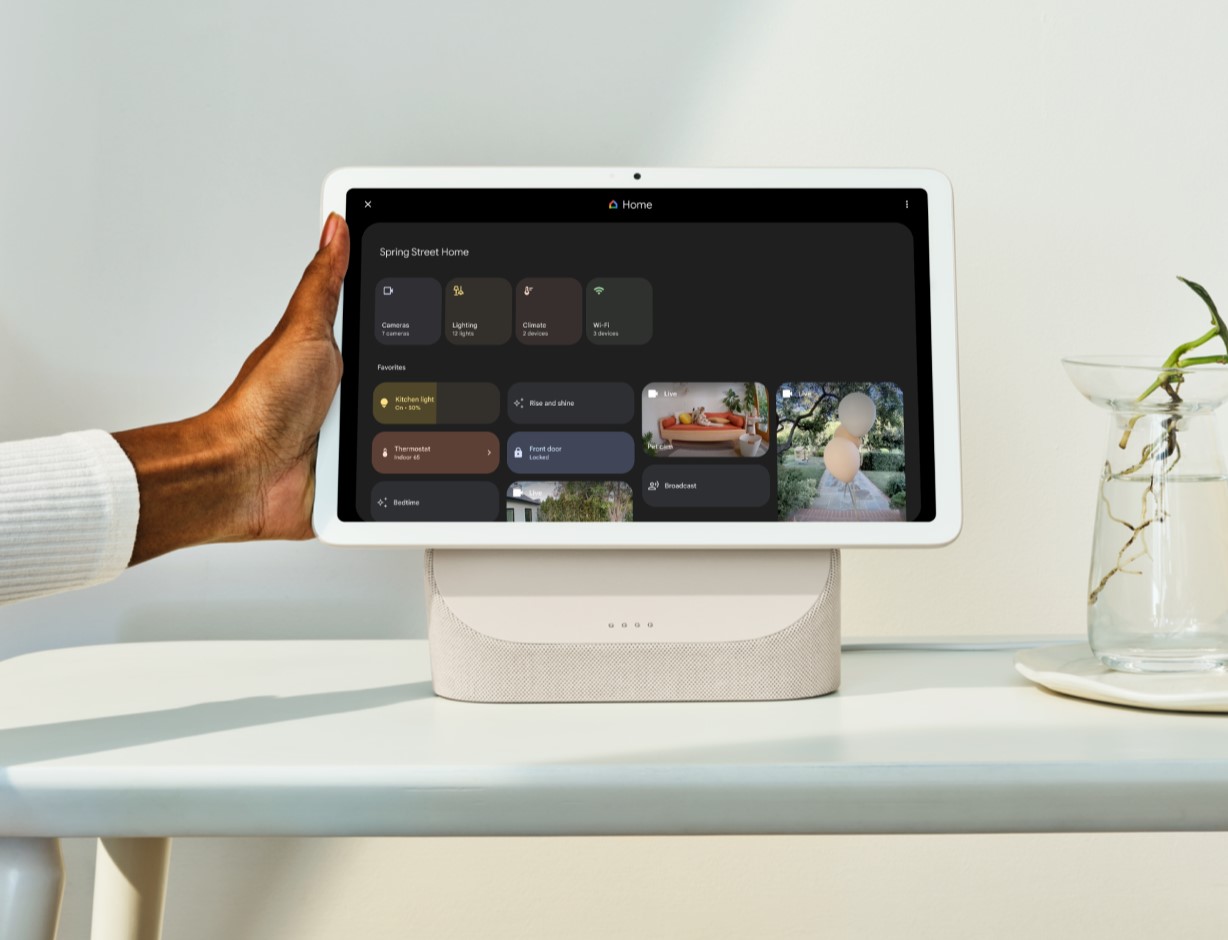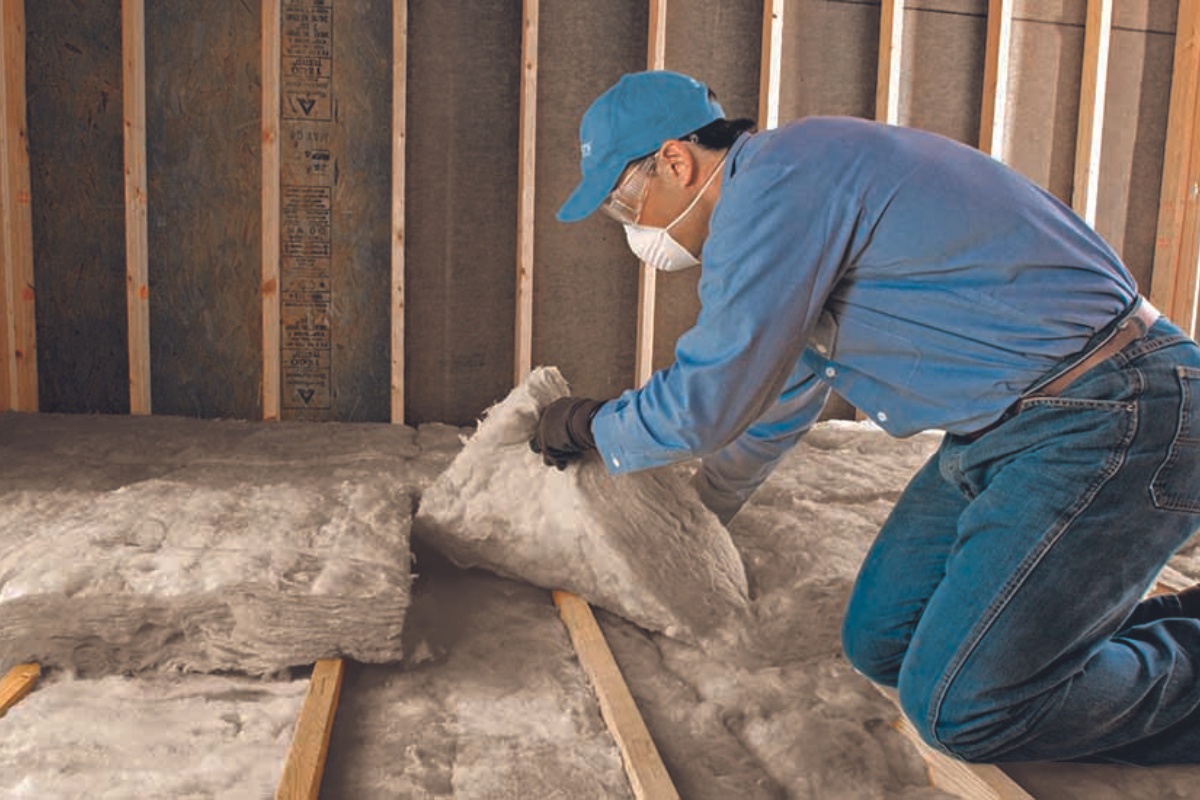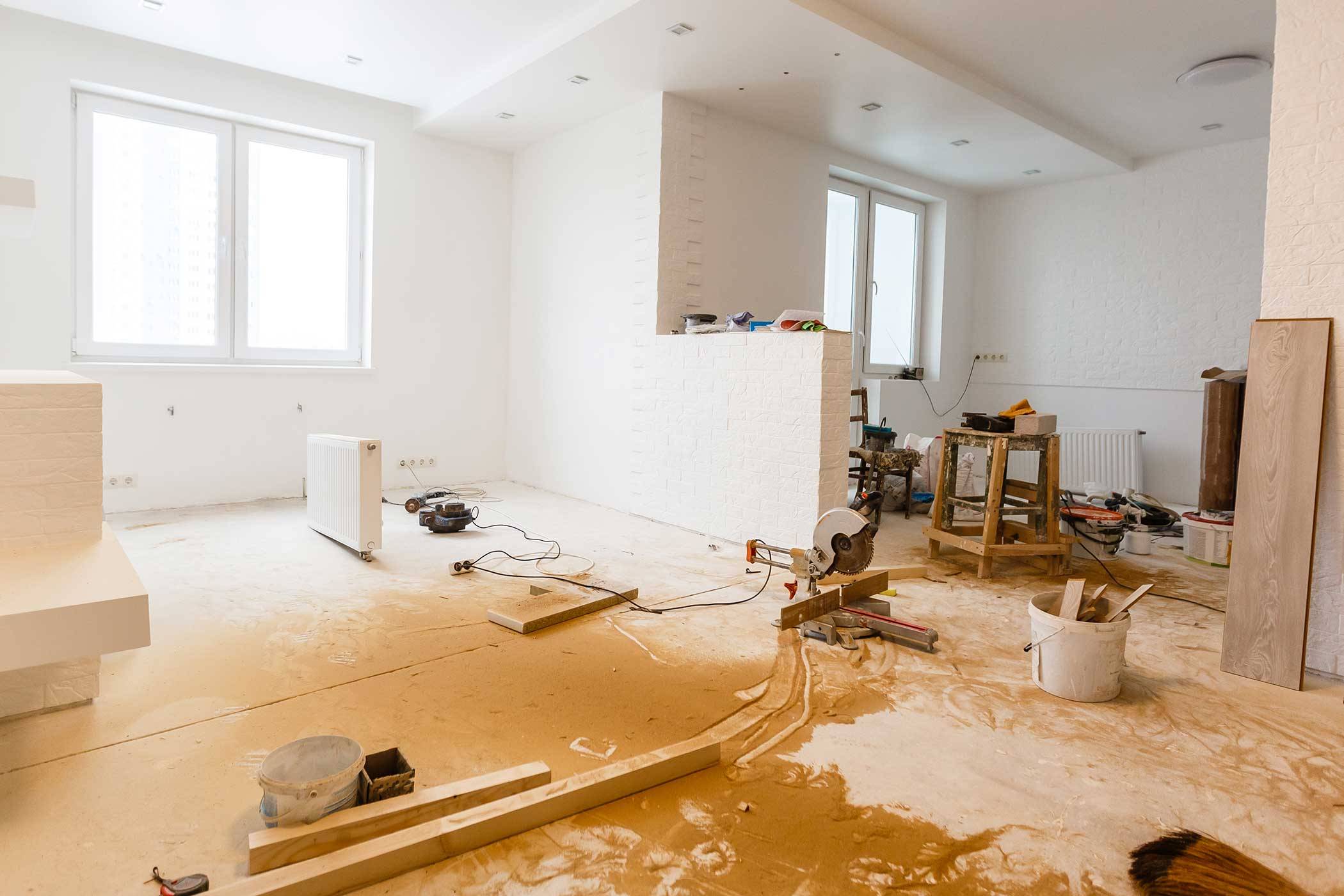Home>Home Maintenance>How To Set Up An Accounting System For A Home Repair Business


Home Maintenance
How To Set Up An Accounting System For A Home Repair Business
Modified: March 6, 2024
Learn how to set up a robust accounting system for your home repair business, ensuring accurate financial records and streamlined operations. Simplify your home-maintenance business finances today!
(Many of the links in this article redirect to a specific reviewed product. Your purchase of these products through affiliate links helps to generate commission for Storables.com, at no extra cost. Learn more)
Introduction
Setting up an effective accounting system is crucial for the success of any home repair business. Whether you’re a small-scale handyman or running a larger renovation company, maintaining accurate financial records and staying on top of your finances is paramount. An accounting system not only helps you manage your day-to-day business transactions but also provides valuable insights into your company’s overall financial health.
In this article, we will guide you through the process of setting up an accounting system specifically tailored for a home repair business. We will cover various aspects, from choosing the right accounting software to implementing internal controls and ensuring compliance with tax regulations.
To begin, let’s dive into the first step of setting up an accounting system for your home repair business—choosing the right accounting software.
Key Takeaways:
- Choose user-friendly, scalable accounting software tailored to your home repair business needs. Consider cloud-based options for accessibility and integration with other software.
- Implement clear financial processes, record income and expenses diligently, and manage accounts receivable and payable efficiently to maintain a healthy cash flow for your home repair business.
Choosing an Accounting Software
When it comes to selecting the right accounting software for your home repair business, there are several factors to consider. The software you choose should be user-friendly, scalable, and capable of handling the specific needs of your industry.
Start by assessing your business requirements. Consider the size of your company, the volume of transactions you anticipate, and the features you need. Are you looking for basic bookkeeping features or do you require more advanced functions such as project tracking or inventory management? Make a list of must-have features to help narrow down your options.
Next, research different accounting software providers. Look for reputable vendors with a track record of serving businesses in the home repair industry. Read customer reviews, compare prices, and take advantage of free trials or demos to get a feel for how the software works.
Consider cloud-based accounting software for its convenience and accessibility. With cloud software, you can easily access your financial data from anywhere, collaborate with team members, and have automatic backups of your information. This can be particularly beneficial if you have multiple employees working off-site or want to access your financial information on the go.
Another critical factor to consider is integration. If you are already using other software applications for project management, scheduling, or invoicing, ensure that the accounting software you choose can seamlessly integrate with these systems. This will save you time and reduce the chances of errors from manual data entry.
Lastly, think about the long-term scalability of the software. As your business grows, you may need additional features or increased data storage. Choose accounting software that can accommodate your future needs and easily transition with your business.
Once you have evaluated your options and made a choice, take the time to learn how to use the software effectively. Familiarize yourself with its features and explore any available training resources or tutorials. This will help you optimize the software’s capabilities and ensure smooth accounting operations for your home repair business.
Setting Up a Chart of Accounts
A chart of accounts is a critical component of your accounting system. It is a structured list of all the accounts used to record financial transactions in your home repair business. By organizing your accounts in a systematic manner, you can easily track income, expenses, assets, liabilities, and equity.
To set up a chart of accounts, start by categorizing your business transactions into different account types. Common account types for a home repair business include:
- Revenue Accounts: These accounts track the income generated from your services, such as Repair Services, Remodeling Services, and Maintenance Contracts.
- Expense Accounts: These accounts record the costs incurred in running your business, such as Equipment Purchases, Material Expenses, and Advertising Costs.
- Asset Accounts: These accounts represent the resources owned by your business, such as Cash, Accounts Receivable, and Tools and Equipment.
- Liability Accounts: These accounts track the debts and obligations of your business, such as Accounts Payable, Loans Payable, and Tax Payable.
- Equity Accounts: These accounts show the owners’ investments and retained earnings, such as Owner’s Equity or Shareholder’s Equity.
Once you have determined the account types, create specific account codes and names for each account. For consistency and clarity, use a numbering system that reflects the hierarchy and nature of the accounts. For example, use a four-digit code where the first two digits represent the account type and the second two digits represent the specific account.
It’s essential to create accounts that align with your specific business needs. Consider creating sub-accounts or categories within each account type to provide more detailed information. For example, within the Expense Accounts category, you may have sub-accounts for Direct Materials, Subcontractor Costs, and Employee Wages.
Keep in mind that your chart of accounts may evolve over time as your business grows and its needs change. Regularly review and make adjustments to ensure that the accounts accurately reflect your business transactions and financial reporting requirements.
Once your chart of accounts is set up, it is crucial to consistently and accurately record each transaction in the appropriate account. This will provide you with a clear and organized record of your financial activities, making it easier to analyze your business’s financial performance and prepare reports.
Establishing Financial Processes and Procedures
Establishing clear financial processes and procedures is essential for the smooth operation of your home repair business. Having well-defined processes in place ensures that financial tasks are consistently and accurately executed, minimizing the risk of errors or financial mismanagement. Here are some key steps to consider when establishing your financial processes and procedures:
Documenting Policies: Start by documenting your financial policies and procedures. This includes detailing how transactions should be recorded, who is responsible for specific tasks, and what controls are in place to safeguard against fraud or errors. Clear documentation helps in training new staff members and serves as a reference for existing employees.
Segregation of Duties: Implement a system of segregation of duties to prevent any single individual from having complete control over financial transactions. For example, the person who approves expenses should be separate from the person who enters them into the accounting system. This helps to maintain transparency and reduce the risk of fraudulent activities.
Expense Approval Process: Define a robust expense approval process to ensure that any expenses incurred by your home repair business are authorized and within budget. This may involve setting spending limits, requiring receipts or invoices, and designating specific individuals or roles responsible for approving expenses.
Invoicing and Payment Procedures: Establish a standardized process for creating and distributing invoices to your clients. This ensures that you receive payment promptly and minimizes any confusion or discrepancies. Similarly, establish procedures for processing incoming payments, such as reconciling payments with invoices and promptly recording them in your accounting system.
Record-Keeping: Develop a system for maintaining accurate and organized financial records. This includes keeping copies of invoices, receipts, and other important financial documents. It is also crucial to regularly back up your digital records to prevent data loss.
Financial Reporting: Decide on the frequency and format of your financial reporting. Whether it’s monthly, quarterly, or annually, establish a schedule for generating financial reports to monitor your business’s financial performance. This may include income statements, balance sheets, and cash flow statements.
Internal Controls: Implement internal controls to safeguard your business’s assets and ensure the accuracy of financial data. This includes physical controls, such as secure storage for financial documents, as well as logical controls, such as password protection for your accounting software and restricted access to financial information.
By establishing and following consistent financial processes and procedures, you can streamline your operations and ensure the accuracy and integrity of your financial data. Regularly review and update your processes as your business evolves to stay aligned with industry best practices and maintain strong financial management.
Recording Income and Expenses
Accurately recording income and expenses is a fundamental aspect of managing your home repair business’s finances. Proper recording ensures that you have a clear understanding of your revenue streams and costs, allowing you to make informed business decisions. Here are some guidelines for effectively recording income and expenses:
1. Revenue:
- Record all sources of income, such as repair fees, remodeling project payments, and maintenance contracts.
- Create separate income categories to track different revenue streams. For example, have separate accounts for repair services, emergency repairs, and custom projects.
- Record income as soon as it is earned to maintain an accurate representation of your company’s financial position.
2. Expenses:
- Document all business expenses, including material costs, subcontractor payments, equipment purchases, and administrative expenses.
- Create expense categories that reflect the nature of your business. For example, have separate accounts for materials, labor costs, and advertising expenses.
- Log expenses as soon as they occur to ensure accurate tracking and to facilitate timely analysis of your business’s financial performance.
3. Receipts:
- Maintain a systematic method for organizing receipts. Categorize and store them in a way that allows for easy retrieval and reference.
- Consider implementing a digital receipt management system that allows you to scan and store receipts electronically.
- Accurate record-keeping of receipts is essential for expense tracking, tax deduction purposes, and ensuring compliance with financial regulations.
4. Expense Tracking:
- Regularly reconcile your bank and credit card statements with your recorded expenses to identify any discrepancies or missing transactions.
- Use accounting software or expense tracking tools to streamline the process of categorizing expenses and generating reports.
- Implement a system for tracking projects or jobs separately to monitor profitability and evaluate the financial performance of each project.
5. Cash and Accrual Accounting:
- Determine whether your business will use cash-basis or accrual-basis accounting. Cash-basis accounting records income and expenses when cash is received or paid, while accrual-basis accounting records income and expenses when they are earned or incurred.
- Understand the advantages and disadvantages of each method and choose the one that best suits your business needs and complies with applicable tax regulations.
Consistently recording income and expenses enables you to gauge the financial health and profitability of your home repair business. It also facilitates accurate tax reporting, expense management, and strategic decision-making. Be diligent and meticulous in your record-keeping practices, and consider seeking professional advice to ensure compliance with accounting standards and regulations specific to your industry.
Managing Accounts Receivable and Accounts Payable
Efficiently managing accounts receivable and accounts payable is crucial for maintaining a healthy cash flow and ensuring timely payments for your home repair business. Here are some best practices to effectively manage both:
Accounts Receivable:
- Establish clear payment terms and communicate them to your clients upfront. Specify the due dates, accepted payment methods, and any applicable late payment penalties.
- Send out invoices promptly after completing a project or service. Include all relevant details, such as the billing address, itemized charges, and payment instructions.
- Regularly review your accounts receivable aging report to track outstanding invoices. Follow up with clients regarding any overdue payments and send reminders or statements to encourage prompt payment.
- Consider offering various payment options to accommodate your clients’ preferences, such as credit card payments, online payment portals, or payment plans for larger projects.
- Establish a collections process for dealing with severely overdue accounts. This may involve contacting a collections agency or pursuing legal action, depending on the circumstances.
Accounts Payable:
- Maintain accurate records of all vendor invoices and bills. Organize them by due date, ensuring that you have a clear overview of your payment obligations.
- Implement a system for verifying the accuracy of invoices before processing payments. Compare them against purchase orders or contracts to ensure that the charges are correct.
- Take advantage of early payment discounts to save money whenever possible. Paying invoices on time or before the due date can help build strong vendor relationships and potentially lead to cost savings.
- Regularly review your accounts payable aging report to identify any overdue payments. Follow up with vendors to address any discrepancies or delays in payment.
- Consider setting up automated payments for recurring expenses to streamline your accounts payable process and reduce the risk of late payments.
Cash Flow Management:
- Monitor your cash flow regularly to ensure that you have enough funds available to meet your financial obligations.
- Forecast and project your cash flow to anticipate any potential shortfalls or surpluses.
- Develop strategies to manage cash flow gaps, such as securing a revolving line of credit, negotiating extended payment terms with vendors, or adjusting your revenue collection practices.
By effectively managing your accounts receivable and accounts payable, you can optimize your cash flow, maintain strong relationships with clients and vendors, and improve overall financial stability for your home repair business. Consistency, clear communication, and proactive follow-up are key to ensuring timely payments and minimizing any potential disruptions to your cash flow.
Consider using accounting software to track expenses, income, and invoices. Set up separate accounts for business and personal finances to keep things organized.
Reconciling Bank Statements
Reconciling your bank statements is a critical financial task that ensures the accuracy of your home repair business’s financial records. By comparing your accounting records with the bank’s records, you can identify any discrepancies, detect errors, and uncover potential fraudulent activities. Here are the steps to effectively reconcile your bank statements:
1. Obtain the Bank Statement:
- Regularly receive your bank statements, either through mail or electronically, depending on your preferred method.
- Ensure that you obtain statements for all bank accounts associated with your business, including checking accounts, savings accounts, and credit card accounts.
2. Verify Transactions:
- Compare the transactions listed on the bank statement with your internal accounting records for the corresponding period.
- Check for any discrepancies such as missing or duplicate transactions, incorrect amounts, or unfamiliar transactions.
- Flag any discrepancies or potential errors for further investigation.
3. Reconcile Deposits and Withdrawals:
- Start by reconciling deposits. Compare the deposits listed on your bank statement with your records of revenue or incoming payments.
- Ensure that all deposited amounts are accounted for and recorded accurately in your accounting system.
- Next, reconcile withdrawals and expenses. Compare the withdrawals listed on the bank statement with your records of expenses or outgoing payments.
- Verify that all expenses are properly recorded and categorized in your accounting system.
4. Account for Outstanding Checks and Deposits:
- Take into account any outstanding checks or deposits that have not yet cleared on the bank statement.
- Record these outstanding items as reconciling items in your reconciliation process.
- Ensure that the status of these items is updated when they eventually clear the bank.
5. Reconcile Statement Balance and Book Balance:
- Calculate the adjusted book balance by adding or subtracting any outstanding reconciling items, such as outstanding checks or deposits.
- Compare the adjusted book balance with the statement balance provided by the bank.
- If the two balances match, the account is reconciled, and you can proceed to the next steps.
- If the balances do not match, double-check your calculations and review the transactions to identify any errors or discrepancies.
6. Investigate and Resolve Discrepancies:
- If you identify any discrepancies during the reconciliation process, thoroughly investigate the cause.
- Check for data entry errors, missing transactions, bank errors, or issues with checks or deposits that have not been processed correctly.
- Resolve any discrepancies by making appropriate adjustments to your accounting records or by contacting the bank to rectify any errors on their end.
7. Document and Retain Reconciliation Records:
- Keep detailed records of your bank statement reconciliations, including any adjustments or reconciling items.
- Retain these records for future reference and potential audit purposes.
Regularly reconciling your bank statements is crucial to maintain accurate financial records and ensure the integrity of your home repair business’s financial data. By identifying and resolving discrepancies promptly, you can maintain a clear and up-to-date view of your company’s financial position.
Generating Financial Reports
Generating financial reports is a crucial step in understanding the financial health and performance of your home repair business. These reports provide valuable insights into your revenue, expenses, profitability, and overall financial position. Here are the key financial reports you should generate:
1. Income Statement:
- An income statement, also known as a profit and loss statement, summarizes your revenue, expenses, and net income or loss over a specific period.
- It helps you assess the profitability of your home repair business by showing how much money you have earned and how much you have spent.
- Key components of the income statement include revenue from services, cost of goods sold, operating expenses, and net income.
2. Balance Sheet:
- A balance sheet provides a snapshot of your business’s financial position at a specific point in time, typically the end of a reporting period.
- It presents your business’s assets, liabilities, and equity, showing what you own, what you owe, and the net worth of your business.
- The balance sheet helps assess the financial stability and solvency of your home repair business.
3. Cash Flow Statement:
- The cash flow statement illustrates the inflows and outflows of cash within your home repair business over a specific period.
- It shows how your business generates and uses cash from operating activities, investing activities, and financing activities.
- The cash flow statement is crucial for monitoring your business’s ability to generate cash and manage its cash flow effectively.
4. Accounts Receivable and Accounts Payable Aging Reports:
- These reports provide a detailed breakdown of your outstanding accounts receivable (unpaid customer invoices) and accounts payable (unpaid vendor invoices).
- By analyzing these reports, you can identify any late-paying customers or overdue bills and take appropriate actions to manage cash flow and collections/payments efficiently.
5. Profitability and Efficiency Ratios:
- Calculate and analyze various profitability and efficiency ratios, such as gross profit margin, net profit margin, return on investment (ROI), and accounts receivable turnover.
- These ratios help you assess the financial performance and efficiency of your home repair business relative to industry benchmarks.
6. Budget Variance Analysis:
- Compare your actual financial results with your budgeted or projected figures to analyze any variances.
- Identify areas where you exceeded or fell short of your budgeted expectations and adjust your financial strategies accordingly.
Generating these financial reports regularly, such as monthly or quarterly, provides valuable insights into your home repair business’s financial performance, allowing you to make informed decisions, monitor cash flow, and plan for future growth. Use accounting software or specialized tools to streamline the report generation process and ensure accuracy. Regularly review and analyze these reports to gain a comprehensive understanding of your business’s financial position and make data-driven decisions to drive success.
Implementing Internal Controls
Implementing internal controls is crucial for safeguarding the assets and ensuring the integrity of your home repair business’s financial operations. Internal controls are policies, procedures, and practices that help prevent fraud, detect errors, and maintain accurate financial records. Here are the key steps to implement effective internal controls:
1. Segregation of Duties:
- Segregation of duties involves separating key financial tasks among different individuals to prevent any single person from having complete control over financial transactions.
- Assign responsibilities for initiating, authorizing, recording, and reviewing financial transactions to different individuals within your organization.
- This division of duties helps minimize the risk of errors or fraudulent activities and increases accountability.
2. Authorization and Approval:
- Establish clear guidelines for the authorization and approval of financial transactions.
- Implement a system where all significant expenditures, such as large purchases or client contracts, require appropriate approval before they are processed.
- This ensures that all expenses are necessary and legitimate and helps prevent unauthorized spending.
3. Documentation and Record-Keeping:
- Maintain organized and detailed records of all financial transactions, including invoices, receipts, contracts, and bank statements.
- Implement a system for carefully documenting and storing these records, ensuring they are easily accessible and can be audited if necessary.
- Accurate record-keeping helps maintain transparency, supports financial analysis, and assists in compliance with tax and legal requirements.
4. Regular Reconciliation and Review:
- Regularly reconcile bank statements, accounts receivable, and accounts payable to detect any discrepancies or errors.
- Thoroughly review financial reports, such as income statements, balance sheets, and cash flow statements, to identify any irregularities or unusual trends.
- Promptly investigate and resolve any issues or discrepancies that arise.
5. Physical and Logical Controls:
- Establish physical controls, such as secure storage areas for financial documents, restricted access to sensitive information, and regular inventory checks of assets.
- Implement logical controls, such as password protection for computer systems, limited access to financial software, and regular data backups.
- These controls help prevent unauthorized access, ensure data security, and minimize the risk of data loss or theft.
6. Ongoing Monitoring and Training:
- Maintain a culture of ongoing monitoring and learning within your organization.
- Regularly review internal controls to ensure their effectiveness and make necessary adjustments as your business evolves.
- Provide comprehensive training to employees on financial policies, procedures, and ethical standards to promote adherence to internal controls.
Implementing robust internal controls helps protect your home repair business from financial risks, enhances transparency and accountability, and ensures the accuracy and reliability of your financial information. By establishing and maintaining effective internal controls, you can safeguard your assets, maintain trust with stakeholders, and promote the long-term success of your business.
Read more: How To Start Up A Home Security Business
Tax Considerations for Home Repair Businesses
As a home repair business owner, it’s essential to understand the tax obligations and considerations that apply to your industry. Proper tax planning and compliance can help you minimize your tax liability while avoiding penalties and legal issues. Here are some key tax considerations for home repair businesses:
1. Determine Your Business Structure:
- Decide on the most suitable business structure for your home repair business, such as a sole proprietorship, partnership, limited liability company (LLC), or corporation.
- Each structure has different tax implications, so consult with a tax professional to determine the best option for your specific circumstances.
2. Business Licenses and Permits:
- Ensure that you comply with all necessary local, state, and federal licenses and permits required for operating a home repair business.
- Research the specific tax requirements associated with your business licenses and permits.
3. Sales Tax:
- Determine if your home repair services are subject to sales tax in your state.
- Understand the sales tax rate applicable to your services and the process for collecting and remitting sales tax to the appropriate tax authority.
4. Deductible Expenses:
- Identify and document all deductible expenses related to your home repair business.
- This may include tools and equipment, materials, vehicle expenses, insurance premiums, advertising costs, and professional fees.
- Keep organized records of these expenses to support your tax deductions.
5. Home Office Deduction:
- If you operate your home repair business from a designated home office area, you may be eligible for a home office deduction.
- Understand the criteria for claiming this deduction, such as using the space exclusively for your business and regularly conducting business activities from the office.
6. Payroll Taxes:
- If you have employees, understand your payroll tax responsibilities.
- Ensure proper withholding of federal and state income taxes, Social Security taxes, and Medicare taxes from employee salaries.
- File the necessary payroll tax returns and make timely payroll tax deposits.
7. Estimated Taxes:
- Home repair businesses often have irregular income streams, making it important to pay estimated taxes throughout the year.
- Calculate your estimated tax liability and make quarterly estimated tax payments to avoid penalties and interest charges.
8. Independent Contractor vs. Employee:
- Determine the classification of individuals working for your business as either independent contractors or employees.
- Understand the tax implications and employer obligations associated with each classification.
9. Seek Professional Advice:
- Consult with a qualified tax professional who specializes in small businesses and familiar with the specific tax regulations applicable to your industry.
- They can provide personalized guidance, help you maximize your tax deductions, and ensure compliance with tax laws and regulations.
Keeping up with tax considerations and obligations is crucial for the financial well-being of your home repair business. Stay informed, maintain detailed records, and seek professional advice to navigate the complexities of tax laws and regulations. By proactively managing your tax responsibilities, you can optimize your tax position and focus on growing your business.
Conclusion
Setting up an effective accounting system for your home repair business is vital for managing your finances, making informed decisions, and ensuring long-term success. By following the steps outlined in this article, you can establish a solid foundation for financial management and maintain accurate records of your income, expenses, and financial health.
Choosing the right accounting software tailored to your business needs, setting up a well-organized chart of accounts, and establishing financial processes and procedures are essential initial steps. Recording income and expenses accurately, managing accounts receivable and accounts payable diligently, and regularly reconciling bank statements are critical for maintaining the integrity of your financial data.
Generating financial reports provides valuable insights into your business’s performance, cash flow, and profitability. It allows you to make data-driven decisions and monitor your financial position effectively. Implementing internal controls ensures the security of your assets, prevents fraud, and promotes transparency and accountability within your organization.
Tax considerations are crucial for staying compliant with applicable tax laws and optimizing your tax position. Understanding your tax obligations, deductible expenses, and maintaining proper documentation can help you minimize your tax liability and avoid penalties and issues with tax authorities.
Remember, it is important to continually review and update your accounting system and financial processes as your home repair business evolves. Stay informed about the latest rules and regulations in accounting and taxation and seek professional advice when necessary to ensure accuracy and compliance.
By establishing a robust accounting system, implementing strong financial controls, and staying on top of your tax responsibilities, you will set yourself up for success in managing the financial aspects of your home repair business. With accurate financial information at your fingertips, you can make informed decisions, optimize your profitability, and focus on growing your business in the long run.
Frequently Asked Questions about How To Set Up An Accounting System For A Home Repair Business
Was this page helpful?
At Storables.com, we guarantee accurate and reliable information. Our content, validated by Expert Board Contributors, is crafted following stringent Editorial Policies. We're committed to providing you with well-researched, expert-backed insights for all your informational needs.













